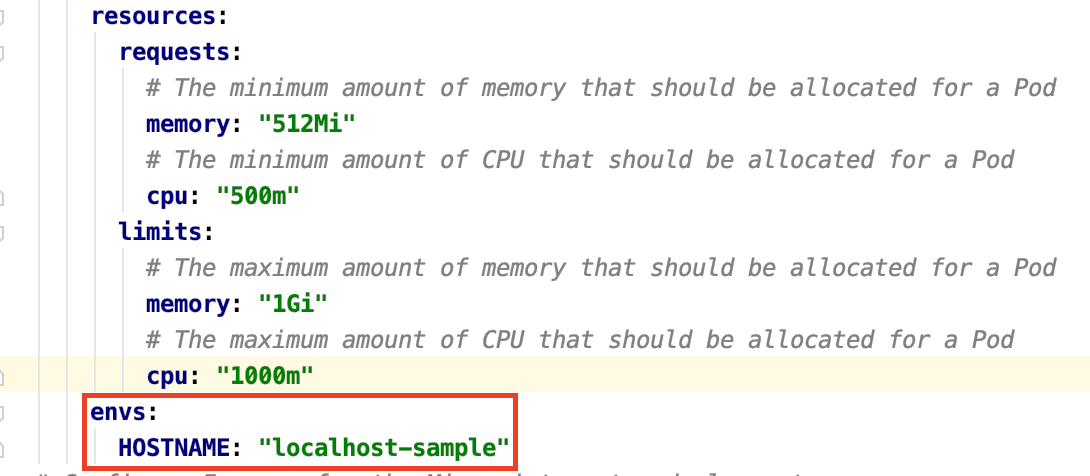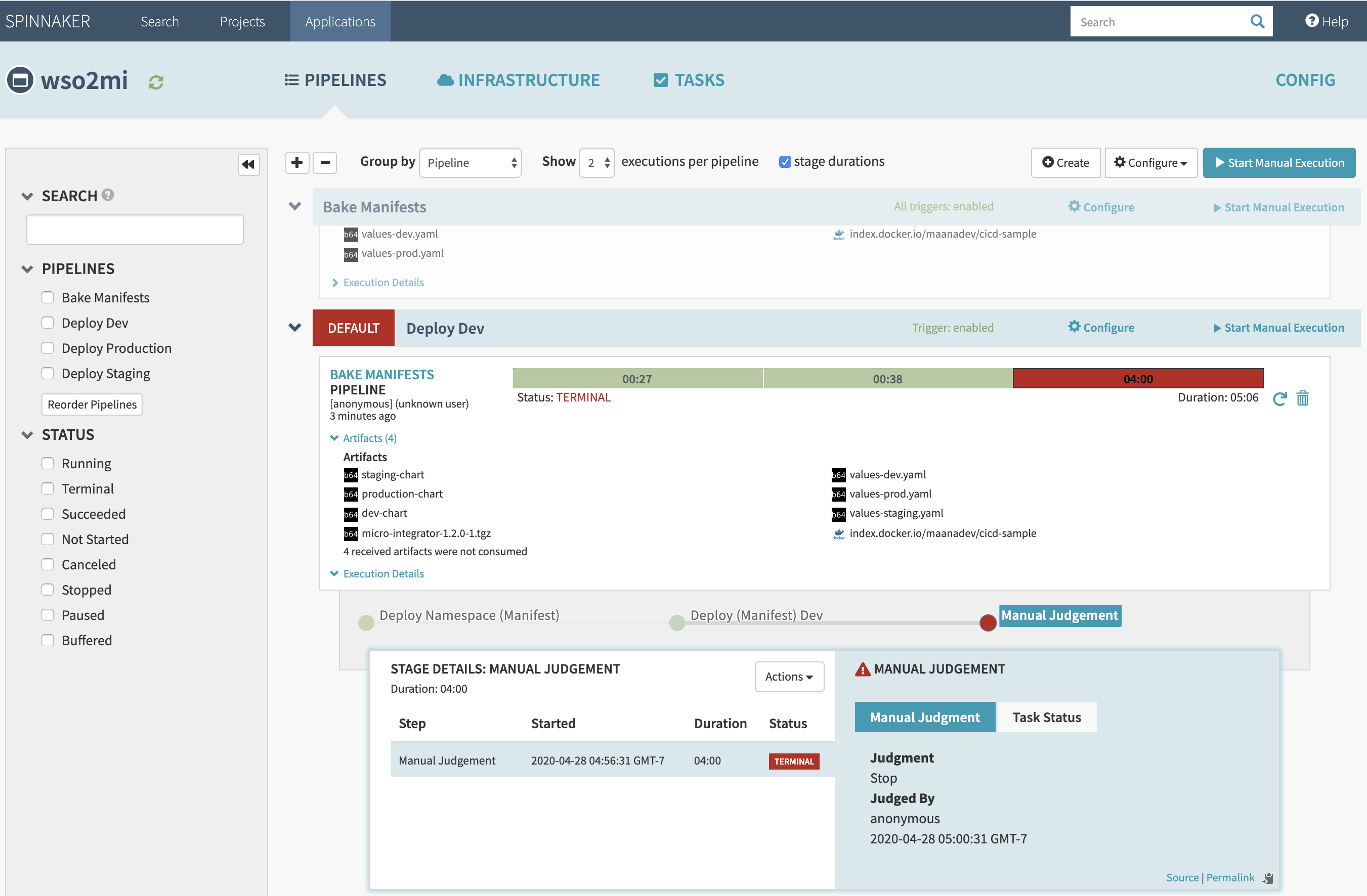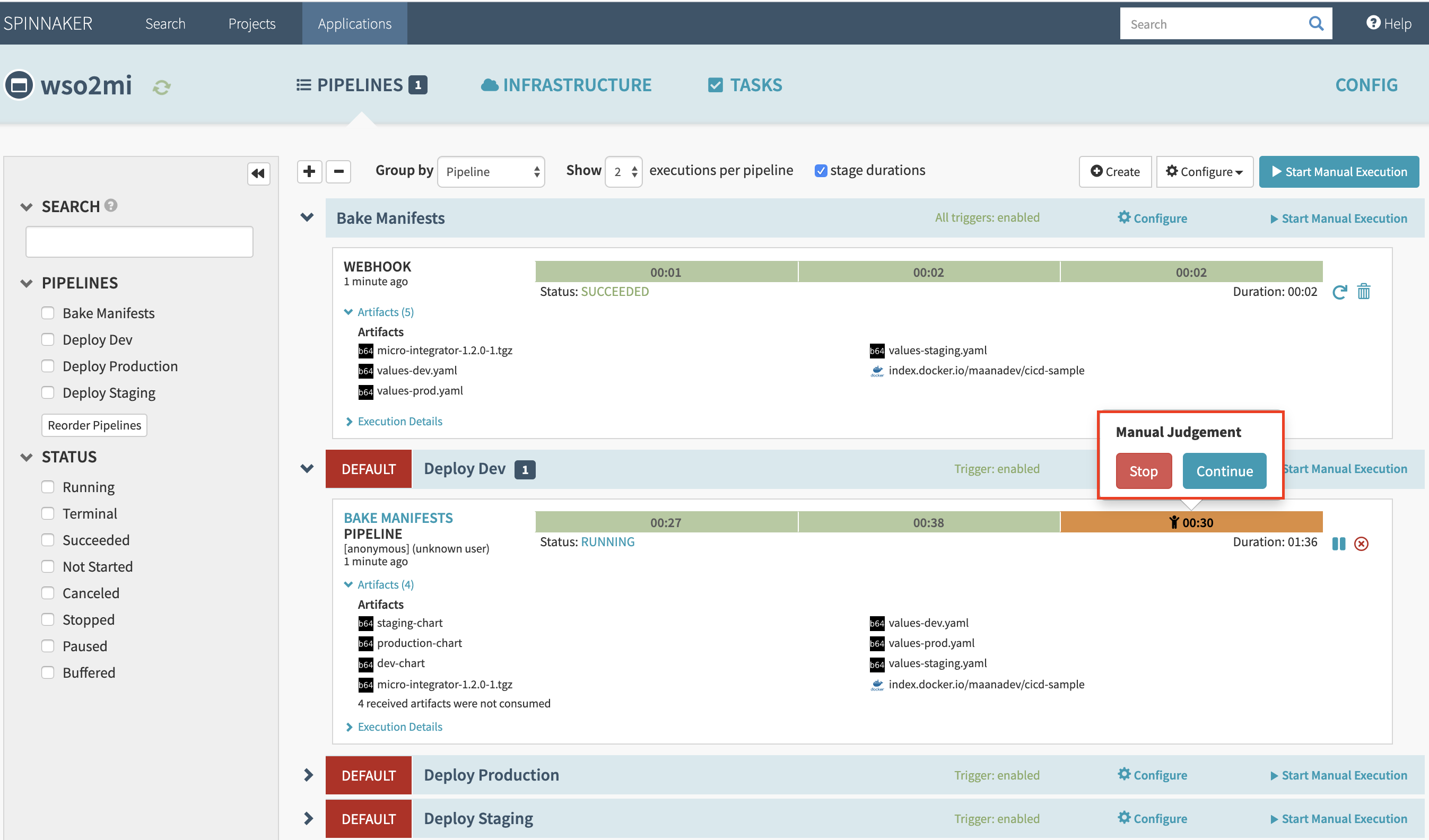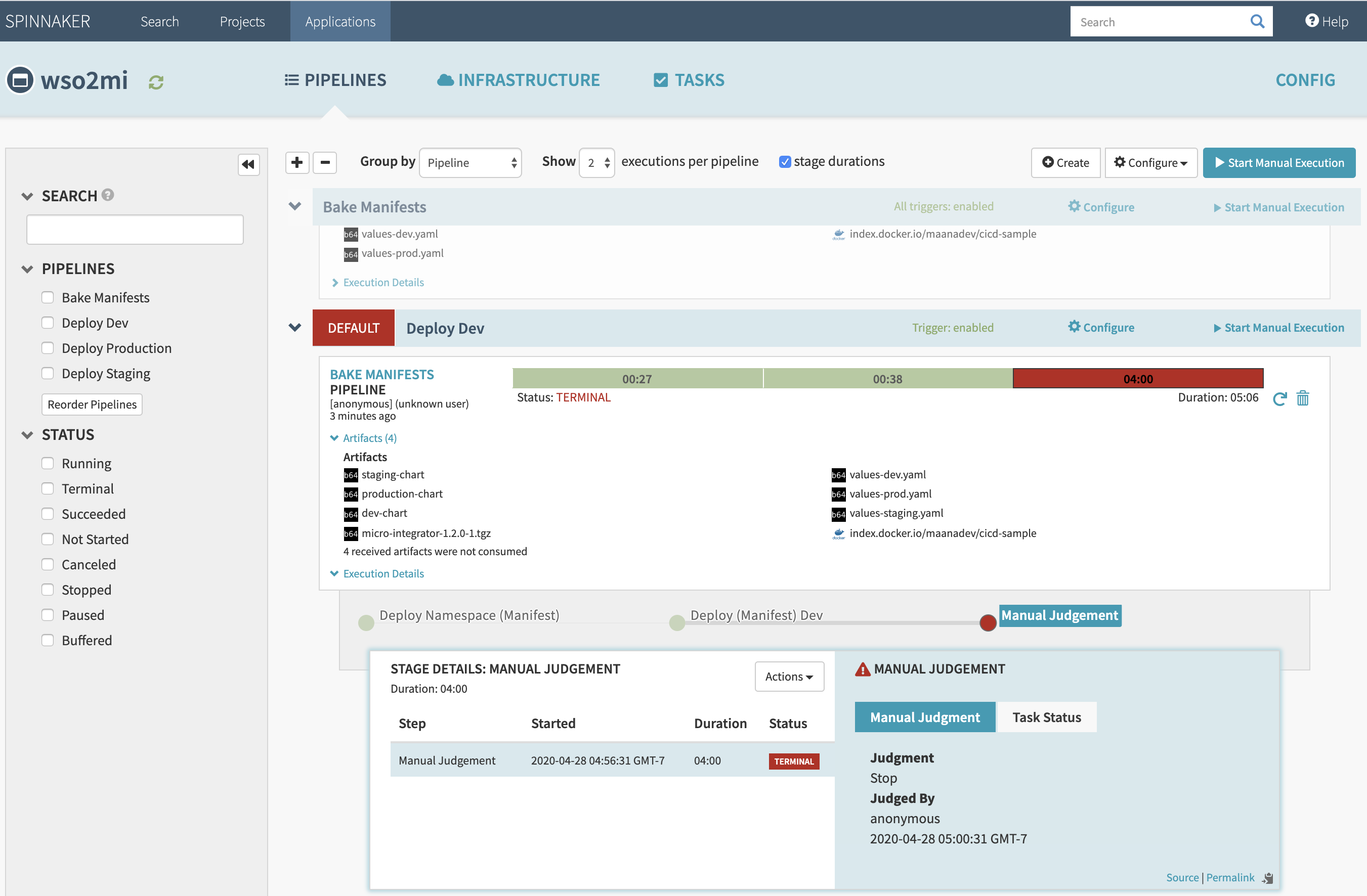Modifying Product Configurations¶
Modify the Product Configurations in efficient manner.¶
This document assumes that you have completed the instructions in the following pages.
If the above requirements are satisfied let’s start modifying product configuration in a step by step manner
Create a fork of the Sample Chart Source Repository. Create a clone of the forked chart source repository as follows.
$ git clone https://github.com/[git-username]/cicd-sample-chart-mi.git
[git-username] tag with the name of your GitHub username.
-
Apply overridden configurations as environment variables.
For example, if you want to change the Hostname to
localhost-sample(in deployment.toml file) in the WSO2 Micro Integrator product pack in the Dev environment.-
Define an environment variable HOSTNAME in the
cicd-sample-chart-mi > micro-integrator/values-dev.yamlfile underwso2.deployment.wso2microIntegrator.envas shown below -
Change the chart data in the sample values file used in the Pipeline Quick Start Guide to use in the custom chart.
applications: - name: wso2mi email: <EMAIL> testScript: path: tests command: test.sh chart: customChart: false name: micro-integrator version: 1.2.0-1 repo: 'https://github.com/[git-username]/cicd-sample-chart-mi' -
Upgrade the Helm chart with the command below, providing the modified sample values file.
$ helm upgrade <RELEASE_NAME> wso2/kubernetes-pipeline -f values-mi.yamlInfo
This may take up to 10 minutes.
-
<RELEASE_NAME> should be replaced with the release name provided when the pipeline is installed initially in the Pipeline Quick Start Guide.
-
Restart the Jenkins pod by deleting the existing pod. This will cause the cluster to spawn a new pod for Jenkins.
$ POD_NAME=`kubectl get pods --selector=app=jenkins -n <NAMESPACE> -o json -o jsonpath='{ .items[0].metadata.name }'` $ kubectl delete pod $POD_NAME -n <NAMESPACE>Replace <NAMESPACE> with the namespace in your cluster.
-
Commit and push the changes in your forked chart source repository to master branch with the following commands
$ cd cicd-sample-chart-mi $ git add . $ git commit -m "Modify Hostname" $ git push origin master -
Stop the manual judgment in any existing environments and watch the deployment of the setup with updated configurations being deployed in the Spinnaker dashboard.
-
Refer to the environment variable HOSTNAME in the Docker Exporter project under the forked CICD sample repository.
-
Update the deployment.toml file in the forked CICD sample repository,
cicd-sample-docker-mi>helloworldDockerExporter/deployment.tomlto use the HOSTNAME environment variable.[server] hostname = "$env{HOSTNAME}" [user_store] type = "read_only_ldap" [keystore.tls] file_name = "wso2carbon.jks" password = "wso2carbon" alias = "wso2carbon" key_password = "wso2carbon" [truststore] file_name = "client-truststore.jks" password = "wso2carbon" alias = "symmetric.key.value" algorithm = "AES"
-
-
Commit and push the changes into your forked CICD sample repository.
-
Stop the manual judgment in any existing environments and watch the deployment of the setup with updated configurations being deployed in the Spinnaker dashboard.






